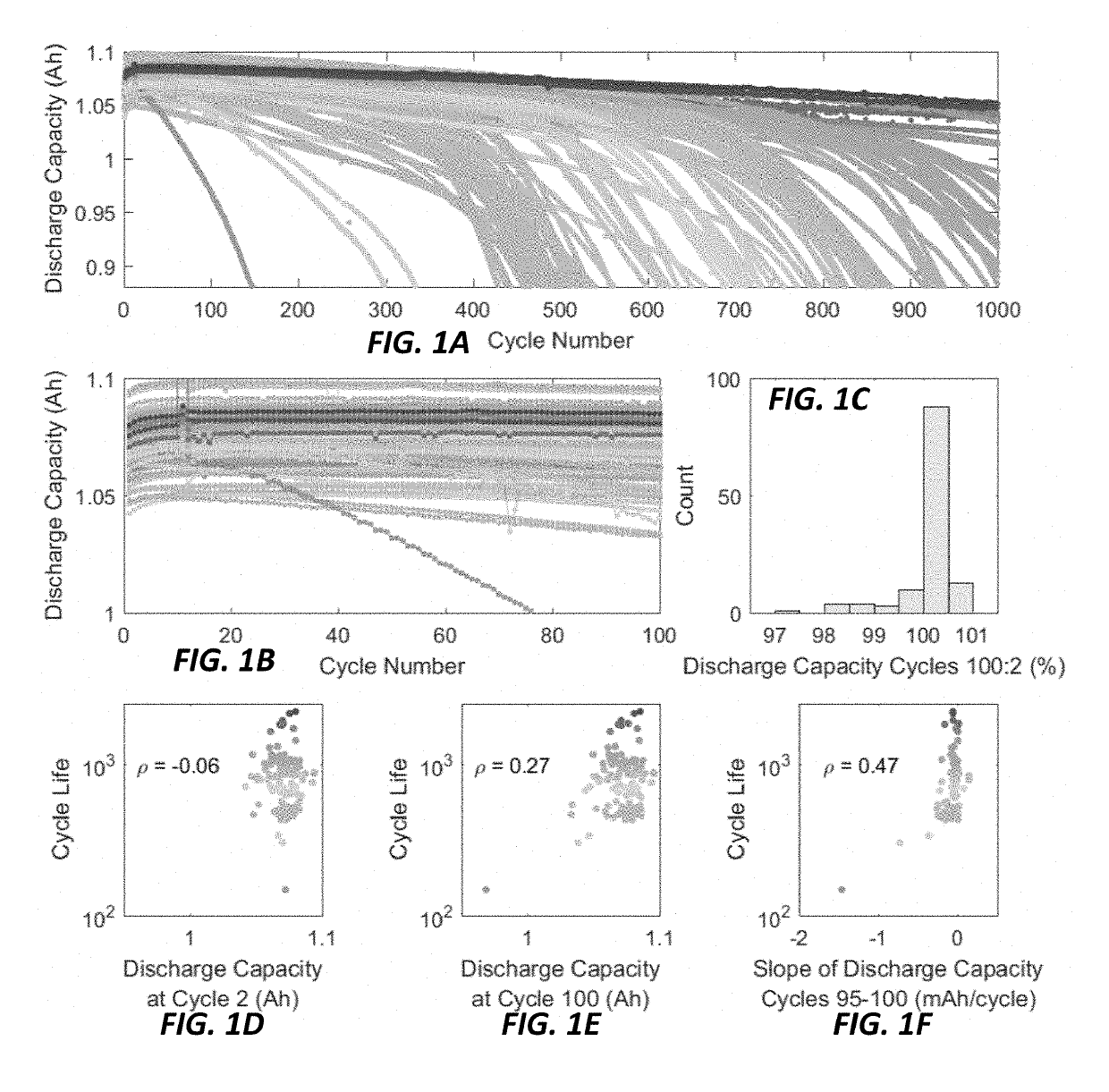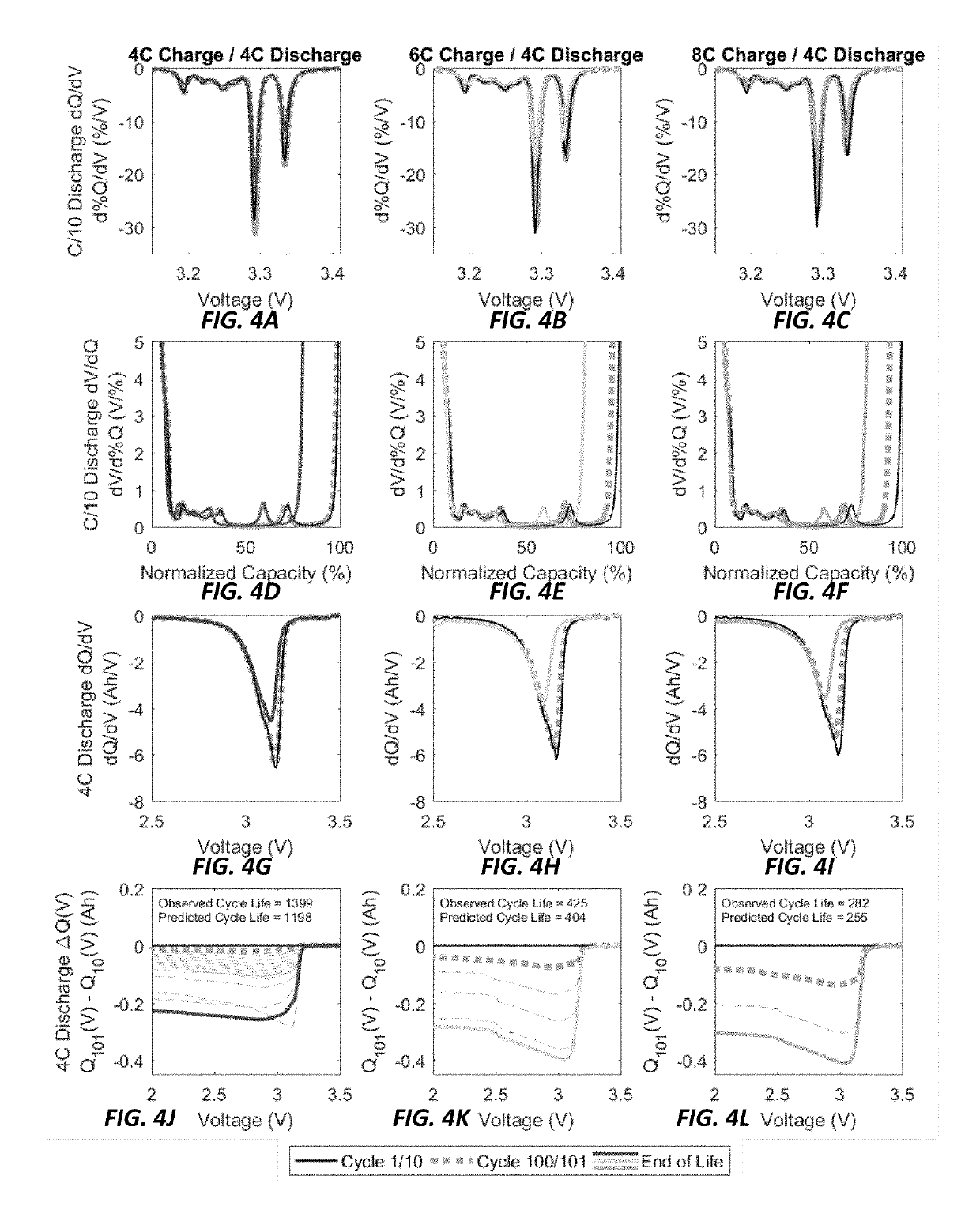Data-driven Model for Lithium-ion Battery Capacity Fade and Lifetime Prediction
a lithium-ion battery and lifetime prediction technology, applied in secondary cell servicing/maintenance, instruments, electrochemical generators, etc., can solve the problems of long battery cycle life entails delay to performance feedback, and the development of models that describe full cell cycle under relevant conditions (e.g., fast charging) remains challenging
- Summary
- Abstract
- Description
- Claims
- Application Information
AI Technical Summary
Benefits of technology
Problems solved by technology
Method used
Image
Examples
Embodiment Construction
[0036]Accurately predicting the lifetime of complex and nonlinear systems such as lithium-ion batteries is crucial for accelerating technology development. However, diverse aging mechanisms, significant device variability, and dynamic operating conditions have remained major challenges. To study this problem, a comprehensive dataset was generated that included 124 commercial lithium-iron-phosphate / graphite cells cycled under fast charging conditions. These cells exhibited widely varied cycle lives spanning from 150 to 2,300 cycles, with end-of-life defined as 20% degradation from nominal capacity. Using discharge voltage curves from early cycles yet to exhibit capacity degradation, machine learning tools were applied both to predict and classify cells by cycle life. In some examples, the best models achieve 9.1% test error for quantitatively predicting cycle life using the first 100 cycles (exhibiting a median of 0.2% increase from initial capacity) and 4.9% test error using the fir...
PUM
 Login to View More
Login to View More Abstract
Description
Claims
Application Information
 Login to View More
Login to View More - R&D
- Intellectual Property
- Life Sciences
- Materials
- Tech Scout
- Unparalleled Data Quality
- Higher Quality Content
- 60% Fewer Hallucinations
Browse by: Latest US Patents, China's latest patents, Technical Efficacy Thesaurus, Application Domain, Technology Topic, Popular Technical Reports.
© 2025 PatSnap. All rights reserved.Legal|Privacy policy|Modern Slavery Act Transparency Statement|Sitemap|About US| Contact US: help@patsnap.com



